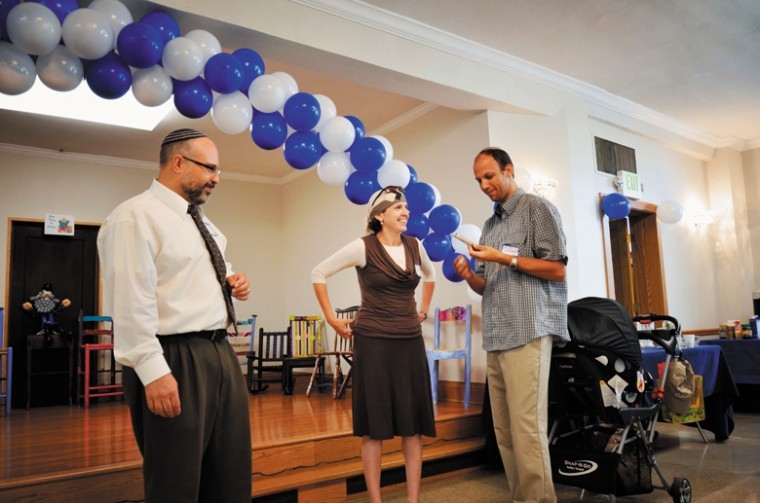Bais Abe’s renovated parsonage offers new home for Israeli educators
Published July 20, 2011
Every time Rabbi Hyim Shafner stops by the home next door, he gets the same feeling – part memory, part emotion.
“I do remember sitting in that house with Rabbi [Abraham] Magence and talking to him,” said Shafner, who took over as Bais Abraham Congregation’s spiritual leader after Magence’s passing in 2003. “So when I go into the house, it brings back a lot of memories. It brings back his presence a little bit.”
ADVERTISEMENT
Now there is a new presence in the house. For the first time since Magence lived there, the structure is a home again. Long utilized as storage space, it now houses the Gastfraind family, who came to St. Louis from Israel in 2009 as part of Torah MiTzion Kollel’s program to bring educators here from the Jewish State.
Bais Abraham has a long-standing arrangement to provide housing for the couple and their three children but had been doing so in an apartment south of Delmar until recently. That’s when the shul came up with an idea.
“It was really expensive to put a family of five in an apartment so the board made a decision that it would make more sense and be better for our interactions with them to have them close by,” said Tessa Gardner, chair of the synagogue’s building committee.
Close by is an apt enough description. The one-and-a-half story, three-bedroom structure is actually part of the synagogue’s property, its backyard lot letting out on the shul’s patio which was just renovated in 2009.
ADVERTISEMENT
In January, the 1,700-square-foot house became the center of a massive facelift. While most of the external components were still in usable form, the inside needed serious work.
“The kitchen was a gut rehab,” said Gardner, who oversaw the design herself. “It was down to bare concrete blocks.”
It doesn’t look like it now. Cherry-stained cabinets as well as new counters, lighting and fixtures dominate the attractive cooking area. There is a double sink for meat and dairy as well as two ranges which have a special mode to allow the occupants to avoid turning them on or off during Shabbat. Like the ovens, the refrigerator doesn’t neglect Jewish Law on Shabbat either, staying dark when the door opens.
The basic structure was in fine shape, said Gardner. The main work outdoors was a new garage door. The interior was a different story however.
“When you walked into it, the walls were good,” recalled Gardner. “It had a new roof already. It’s got a full basement. Everything was sturdy and in place but the inside needed a lot of redoing.”
That meant a new oak floor, fresh paint, revamped lighting and rewired electrical. Even some of the plumbing and bathroom fixtures were replaced. The stairs were refinished and the balcony was redone among other things. New doors were installed as well.
“It’s got all new HVAC,” Gardner said. “The house didn’t have modern heating and air conditioning. So all the ducts you see here are all new.”
On Sunday, the community had a chance to stop by and admire the shul’s handiwork, while enjoying an Israeli breakfast and matkot, a popular sport little-known outside the Jewish State.
“It’s kind of like oversized ping-pong paddles and a slightly oversized ball,” Gardner said. “They play outdoors, hit the ball back and forth and see how long they can keep it in the air. It’s a very Israeli game.”
The housewarming marked an interesting milestone for the Torah MiTzion Kollel’s effort. It marked the first time three families from the Kollel project were all to be in St. Louis at once – if only briefly.
In addition to the presence of the Gastfrainds, participants also were able to say farewell to Chaim and Merav Possick, another family of Israeli shlichim who had been staying here as part of TMK’s educational program and were set to depart the following day. In addition, the Shachak family, who are taking the place of the Possicks with TMK, were also at the event.
Gardner said the shul worked hard to keep costs down. Many of the materials for the effort were bought at Home Depot and Lowe’s with the total price tag coming in at about $70,000 which was financed with a loan.
Rabbi Shafner said that it feels fitting to know that the Gastfrainds will be living in the late rabbi’s home. Like Magence, Shafner said the Gastfrainds are deeply embracing of the entire community.
“It kind of feels full circle to have someone stay there,” he said. “Rabbi Magence would be proud to have them living in that house.”
















